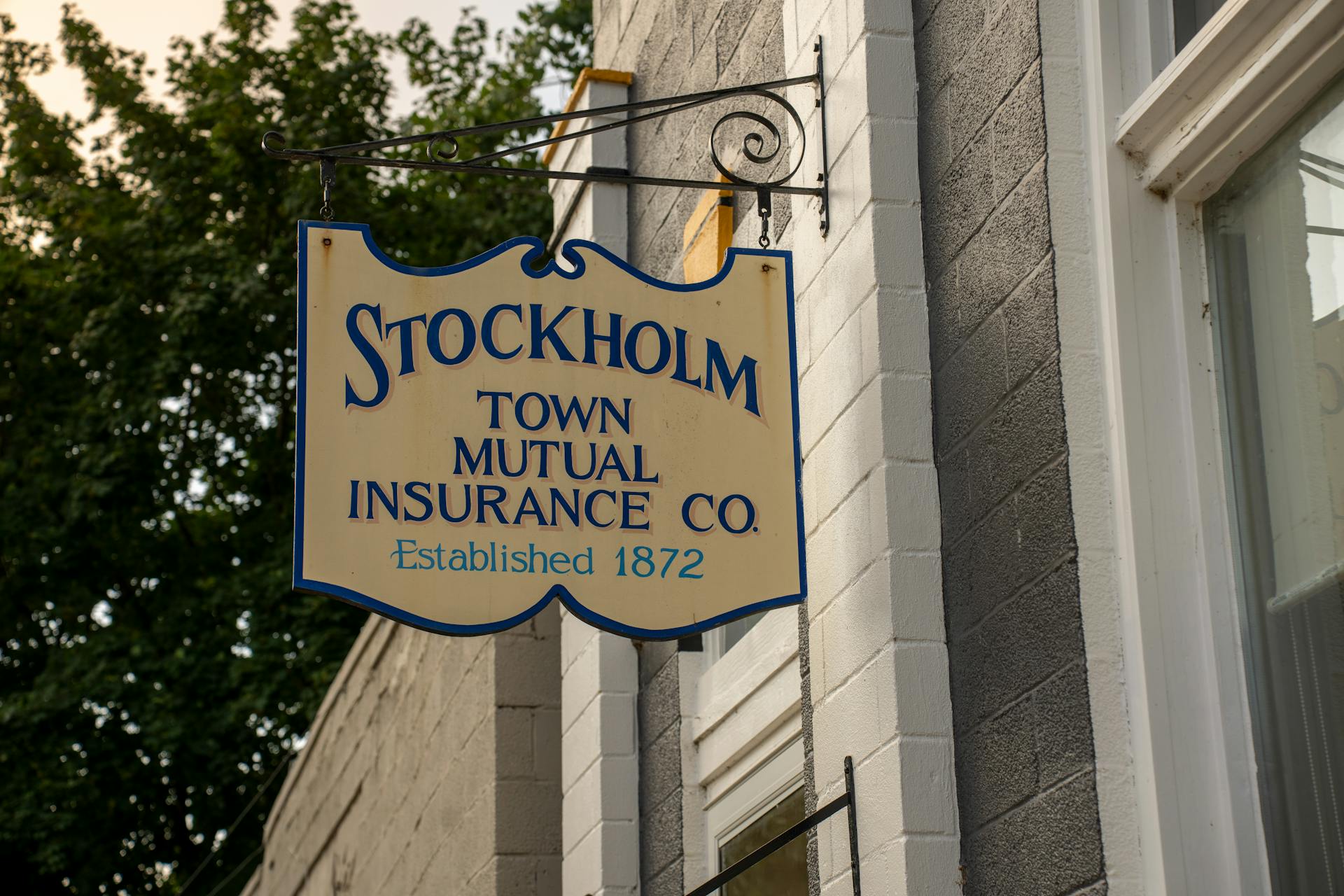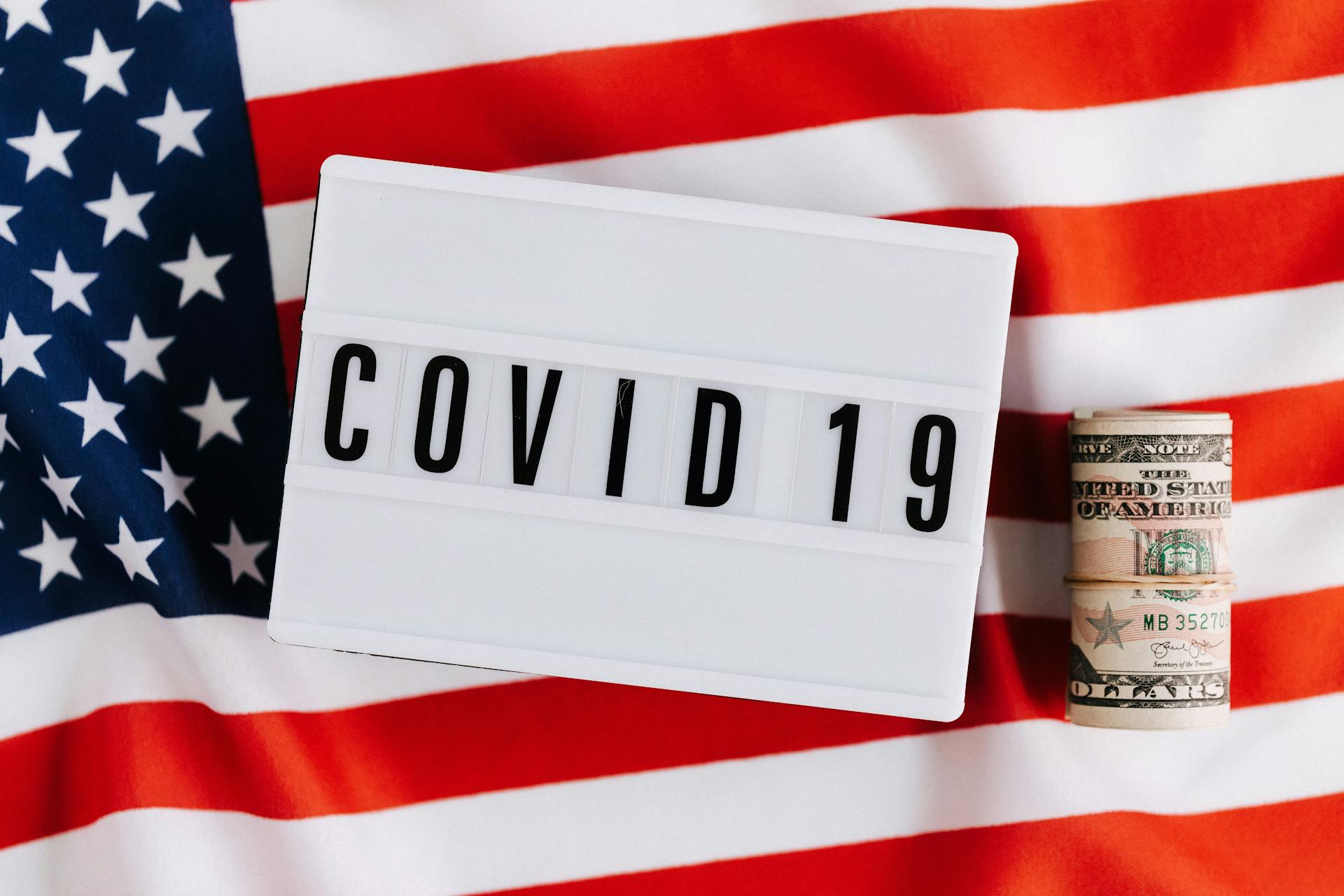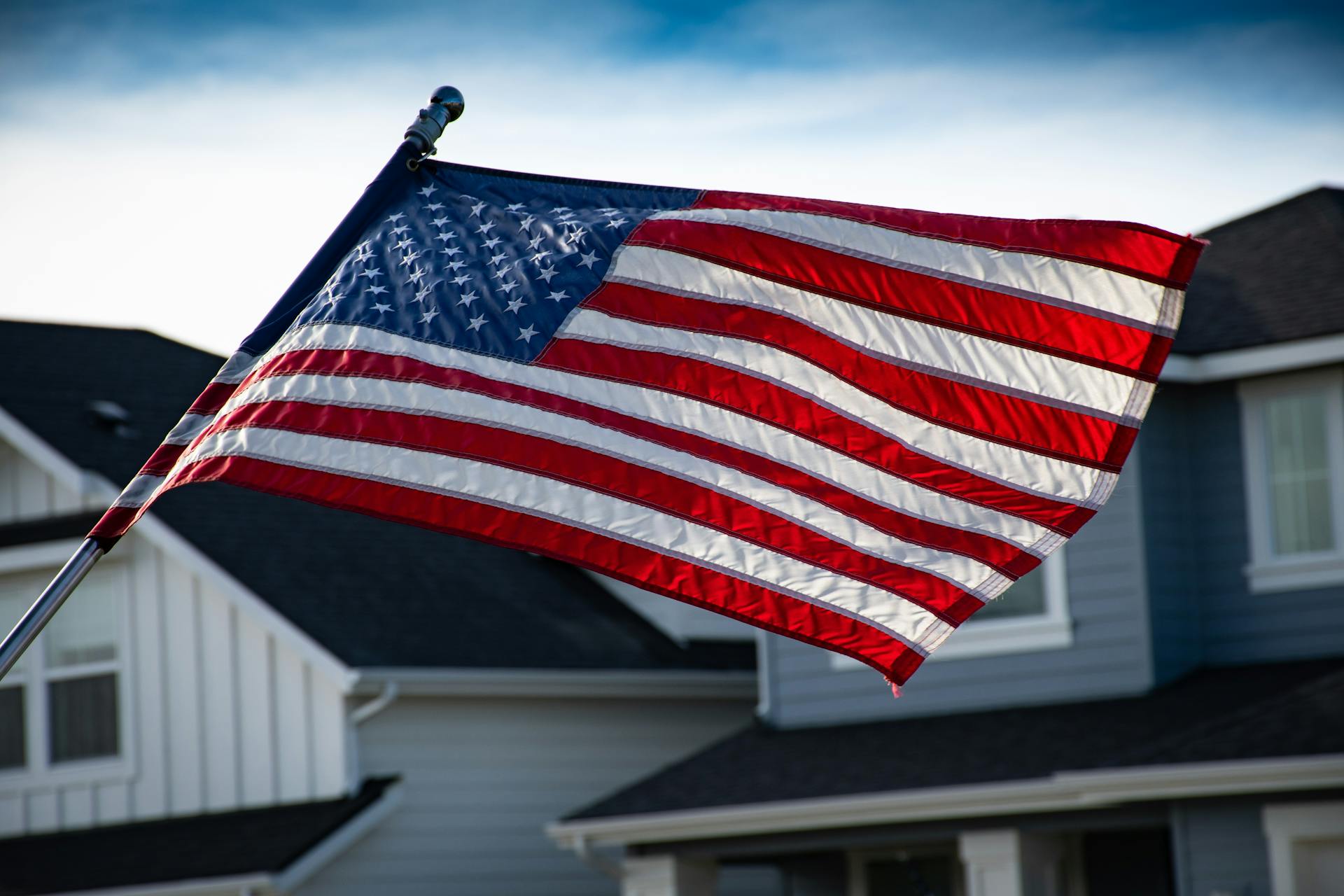
American International Group, or AIG, has a fascinating history that spans over a century. Founded in 1919 by Cornelius Vander Starr, AIG started as a small insurance company in Shanghai, China.
AIG quickly expanded its operations and grew into a global insurance giant, offering a wide range of financial products and services. By the 1990s, AIG had become one of the largest insurance companies in the world.
Despite its success, AIG's fortunes took a dramatic turn in the early 2000s. The company's aggressive expansion into subprime mortgage-backed securities led to significant financial losses, which ultimately contributed to its downfall.
In 2008, AIG received a massive bailout from the US government, totaling $182 billion, in an effort to prevent the company's collapse and stabilize the global financial system.
History of American International Group
After World War II, American International Group (AIG) expanded globally, entering Japan and Germany to provide insurance for American military personnel.
Throughout the late 1940s and early 1950s, AIG continued to expand in Europe, with offices opening in France, Italy, and the United Kingdom. By the end of the decade, C.V. Starr's general and life insurance organization included an extensive network of agents and offices in over 75 countries.
In the 1980s, AIG continued to expand its market distribution and worldwide network by offering a wide range of specialized products, including pollution liability and political risk.
Curious to learn more? Check out: Wells Fargo Advisors Financial Network
1945-1959: Domestic Expansion
In 1952, Starr acquired Globe & Rutgers Fire Insurance Company and its subsidiary, American Home Fire Assurance Company, marking a significant shift in focus towards the American market.
This move helped expand C.V. Starr's general and life insurance organization, which already had an extensive network of agents and offices in over 75 countries.
By the end of the decade, C.V. Starr's organization was a major player in the insurance industry, with a strong presence in the US market.
The acquisition of Globe & Rutgers Fire Insurance Company also brought new expertise and resources to the table, further solidifying Starr's position in the industry.
Expand your knowledge: Secondary Mortgage Market Enhancement Act
1959–1979: Reorganization and Specialization
In 1960, C.V. Starr hired Hank Greenberg to develop an international accident and health business, marking a significant shift for the company.
Greenberg's innovative approach focused on selling insurance through independent brokers rather than agents, allowing AIU to price insurance according to its potential return.
This strategy allowed the company to eliminate agent salaries and price insurance accordingly, even if it suffered decreased sales of certain products for great lengths of time with very little extra expense.
AIG was incorporated in 1967 as a unifying umbrella organization for most of C.V. Starr's general and life insurance businesses.
Starr named Greenberg his successor in 1968, paving the way for Greenberg's continued leadership of the company.
The company went public in 1969, marking a major milestone in its history.
The 1970s presented many challenges for AIG, including the curtailment or cessation of operations in the Middle East and Southeast Asia due to the changing political landscape.
Despite these challenges, AIG continued to expand its markets by introducing specialized energy, transportation, and shipping products to serve the needs of niche industries.
A different take: Equitas Small Finance Bank Share Price Target 2025
1979-2000: Opportunities and Directions
In the 1980s, AIG expanded its market distribution and worldwide network by offering a wide range of specialized products, including pollution liability and political risk.
AIG listed its shares on the New York Stock Exchange (NYSE) in 1984, marking a significant milestone in its growth.
Throughout the 1990s, AIG developed new sources of income through diverse investments, including the acquisition of International Lease Finance Corporation (ILFC), a provider of leased aircraft to the airline industry.
In 1992, AIG received the first foreign insurance license granted in over 40 years by the Chinese government.
AIG acquired SunAmerica Inc., a retirement savings company managed by Eli Broad, in 1999.
The company's growth and expansion during this period set the stage for its future success, including its ability to navigate the challenges of the early 2000s.
2000-2012: Expansion and Decline
In 2007, AIG purchased the remaining 39% of 21st Century Insurance for $749 million, expanding its online auto insurance business.
AIG's insurance unit was rebranded to 21st Century Insurance in late 2008 due to the failure of the parent company and the ongoing recession.
Martin J. Sullivan became CEO of AIG in 2005, after starting his career at AIG as a clerk in its London office in 1970.
Under Sullivan's leadership, AIG took on tens of billions of dollars of risk associated with mortgages and insured tens of billions of dollars of derivatives against default.
AIG used collateral on deposit to buy mortgage-backed securities, but didn't purchase reinsurance to hedge that risk.
The losses in the mortgage market in 2007-2008 forced AIG to pay out insurance claims and replace losses in its collateral accounts.
Sullivan resigned as CEO on June 15, 2008, after disclosure of financial losses and a falling stock price, and was replaced by Robert B. Willumstad.
Willumstad was later forced to step down and was replaced by Ed Liddy on September 17, 2008.
Bob Benmosche took over as CEO on August 3, 2009, replacing Liddy, who had announced his retirement earlier that year.
You might like: Ally Bank Ceo
2012–2016: Modern Era
In 2012, American International Group (AIG) began to recover from its near collapse in 2008. The company's stock price had risen significantly, but it still had a long way to go.
AIG's new CEO, Robert Benmosche, played a crucial role in the company's turnaround. Under his leadership, AIG began to sell off its non-core assets and focus on its core insurance business.
AIG's insurance business continued to grow, with the company reporting a significant increase in premiums written in 2013. This growth was fueled by the company's strong presence in the global insurance market.
In 2014, AIG announced plans to spin off its aircraft leasing business, International Lease Finance Corporation (ILFC). The company sold ILFC to Chinese conglomerate Citic Group for $4 billion.
By 2015, AIG had largely recovered from the 2008 financial crisis. The company's stock price had risen significantly, and its financials were looking strong.
AIG's focus on its core insurance business had paid off, and the company was now well-positioned for future growth.
A unique perspective: Business Liability Insurance New York
Financial Performance
AIG's financial performance is a story of recovery and stability. The company is considered financially stable, earning an A+ rating from Fitch Ratings due to its efforts to change its business mix and expense management.
AIG's earnings have been consistent, with an annualized core operating return on equity of 9% in the fourth quarter, matching the full-year result. This is a positive sign, but the company could benefit from generating stronger returns in favorable market conditions.
Fitch Ratings maintains a $75 fair value estimate for AIG, considering the company's shares to be fairly valued at the moment.
Related reading: Prudential Financial Ratings
Financial Strength
AIG's financial strength is a crucial aspect of its overall financial performance. AIG has a strong interest coverage ratio of 9.38, indicating its ability to pay interest on its debts.
The company's ability to cover its interest payments is a key indicator of its financial health. This ratio is higher than some of its peers, such as CB, which has an interest coverage ratio of 16.10.
AIG's financial strength is also reflected in its ability to generate cash flow. However, specific metrics such as quick ratio and current ratio are not available for AIG.
Here is a comparison of AIG's interest coverage ratio with its peers:
Business
AIG is a large financial institution in Australia and China, offering financial services including credit security mechanisms. The company is also a major player in the United States, serving as the largest underwriter of commercial and industrial insurance.
AIG provides a wide range of financial services, including property casualty insurance, life insurance, retirement products, and mortgage insurance. In 2012, the company rebranded its global property-and-casualty insurance business, Chartis, as AIG Property Casualty.
Worth a look: Brixmor Property Group
Causes of the Financial Crisis
The financial crisis of 2008 was a complex event with multiple causes, but one key player was American International Group (AIG). AIG's division started selling a financial product called a collateralized debt obligation (CDO), which became popular among investment banks and other large institutions due to AIG's pristine credit rating.
Many of these CDOs were bundled mortgages, including subprime loans, which were issued to people who were ill-qualified to repay them. AIG believed that defaults on these loans would be insignificant, but they were wrong.
A big chunk of the insured CDOs came in the form of bundled mortgages, with the lowest-rated tranches comprised of subprime loans. In 2007, when foreclosures on home loans rose to high levels, AIG and other financial institutions that had invested in credit default swaps faced mounting losses from their subprime activities.
AIG was not the only institution to gamble on CDOs, but its losses were substantial. The company's troubles were exacerbated by its decision to insure CDOs against default through credit default swaps. This move seemed unlikely to result in payouts at the time, but it ultimately led to significant losses for AIG.
AIG's involvement in the financial crisis was significant, but the company has since recovered. In 2013, it repaid the last installment on its debt to taxpayers and the U.S. government relinquished its stake in AIG.
Government Intervention and Bailout
In 2008, the U.S. government stepped in to save AIG, determining the company was too vital to the global economy to collapse.
A deal was struck in September 2008 to save the company, and AIG received a bailout from the U.S. government.
The bailout was one of the institutions that was determined to be too big to fail, and AIG survived the financial crisis, paying back its debt to U.S. taxpayers.
AIG's board had announced that the company would not join a lawsuit against the U.S. government, led by Hank Greenberg, over the bailout in 2011.
Judge Thomas C. Wheeler ruled that the Federal Reserve payment to AIG had been an illegal exaction, but did not award compensation to the plaintiffs.
Here are some key dates related to the bailout and litigation:
- September 2008: AIG receives bailout from the U.S. government
- 2011: Hank Greenberg sues the U.S. government over the bailout
- 2013: AIG files suit against the Federal Reserve Bank of New York over the bailout
- 2014: AIG settles with Bank of America for $650 million
In July 2023, the AIG board included several members, but the article does not specify who they were.
Company Overview
American International Group (AIG) is a major American insurance corporation based in New York City. Its UK headquarters are in London, and it has operations in Paris and Hong Kong.
AIG is a public company listed on the New York Stock Exchange (NYSE) under the ticker symbol AIG. It's also 80% owned by the U.S. Government.
The company was founded by Cornelius Vander Starr in 1912. AIG offers a range of products including insurance, annuities, mutual funds, and financial products.
Here are some key statistics about AIG's financial performance:
As of 2008, AIG had a total of 116,000 employees worldwide.
Is Financially Stable?
AIG is considered financially stable, thanks to its multiyear efforts to change its business mix and expense management. This is reflected in the strong rating given by Fitch Ratings.
A+ is the rating Fitch gave AIG, indicating a strong financial position. This is a testament to the company's progress in recent years.
A more favorable commercial insurance pricing environment has also contributed to AIG's financial stability. This shift in the market has helped the company's bottom line.
AIG's commitment to changing its business mix and expense management has paid off, resulting in a stronger financial position.
American International Group
American International Group, or AIG, is a major American insurance corporation based in New York City. AIG was founded in 1912 by Cornelius Vander Starr and has since grown to become one of the largest insurance companies in the world.
AIG offers a wide range of products, including insurance, annuities, mutual funds, and financial products. In 2007, AIG's revenue reached $110.064 billion, with an operating income of $8.943 billion.
AIG has a significant presence in the global market, with operations in the UK, Continental Europe, and Asia. The company's UK headquarters are in London, its Continental Europe operations are based in Paris, and its Asian HQ is in Hong Kong.
Here are some of AIG's notable subsidiaries:
- AIG Europe S.A.
- American General Life Insurance Company
- American Home Assurance Company
- Lexington Insurance Company
- National Union Fire Insurance Company of Pittsburgh, PA
- The United States Life Insurance Company in the City of New York
- The Variable Annuity Life Insurance Company (VALIC)
- American International Group UK Ltd.
- AIG General Insurance Co. Ltd.
- Validus Reinsurance, Ltd.
AIG's financial stability is a topic of interest, with Fitch Ratings giving the company an A+ (strong) rating in 2008. This rating reflects AIG's efforts to change its business mix and expense management, as well as a more favorable commercial insurance pricing environment.
A unique perspective: Flagstar Bank Rating
Property Casualty Insurance
American International Group achieved revenue of $103,189.00 million in 2010.
The company's financial performance that year was quite significant, with a revenue of $103,189.00 million.
American International Group posted a loss of $-10,949.00 million in 2010, showing that the company's financials can be quite volatile.
This highlights the importance of closely monitoring a company's financial performance over time.
You might like: Dogs of the Dow Performance History
Sponsorships
AIG has a history of partnering with top-notch sports teams and events, starting with its role as the shirt sponsor of Manchester United F.C. between 2006 and 2010.
During its time as Manchester United's sponsor, AIG's shirts were worn during one of the club's most successful periods, coinciding with Sir Alex Ferguson's third great United team.
The team won three Premier League titles and the Champions League in four seasons, a remarkable achievement that showcases AIG's commitment to excellence.
In golf, AIG signed a five-year contract to be the title sponsor of the Women's British Open in 2019, rebranding the event as the AIG Women's Open in 2020.

The AIG Women's Open boasts the largest major women's golf prize fund, totaling $US5.8 million in 2021, a significant increase from previous years.
By 2022, the tournament had set a new benchmark with a purse of $7.3 million, a 125% increase since 2018.
AIG has committed to continuing its partnership with the AIG Women's Open through 2030, with plans to increase the total purse to $9 million.
Corporate Governance
The company has a strong board of directors, comprising of highly experienced and accomplished individuals. Paola Bergamaschi brings a wealth of knowledge from her executive roles at State Street, Credit Suisse, and Goldman Sachs.
James Cole Jr. is the chairman and CEO of The Jasco Group, and John Rice has held senior positions at GE, including vice chairman and president of the GE Global Growth Organization. These individuals bring a wealth of experience in leadership and management.
W. Don Cornwell has a background in broadcasting, having served as chairman and CEO of Granite Broadcasting Corporation. Linda A. Mills has experience in operations, having been a vice president at Northrop Grumman Corporation.
Expand your knowledge: Aia Group Ceo
Diana M. Murphy has a background in sports, having been the president of the USGA, and Peter R. Porrino has experience in finance, having been executive vice president and CFO at XL Group Ltd. Therese M. Vaughn has experience in insurance, having been CEO of the National Association of Insurance Commissioners.
Vanessa A. Wittman has experience in finance, having been CFO at Glossier, Dropbox, and Marsh McLennan. Peter Zaffino is the chairman and CEO of AIG, bringing a wealth of experience in leadership and management.
Here's a list of the company's board of directors:
- Paola Bergamaschi – former executive at State Street, Credit Suisse, and Goldman Sachs
- James Cole Jr. – chairman and CEO, The Jasco Group
- John Rice – former vice chairman of GE, former president and CEO of the GE Global Growth Organization
- W. Don Cornwell – former chairman and CEO, Granite Broadcasting Corporation
- Linda A. Mills – former vice president of operations, Northrop Grumman Corporation
- Diana M. Murphy – managing director, Rocksolid Holdings; former president, USGA
- Peter R. Porrino – former executive vice president and CFO, XL Group Ltd
- Therese M. Vaughn – former CEO, the National Association of Insurance Commissioners
- Vanessa A. Wittman – former CFO, Glossier, Dropbox, Marsh McLennan
- Peter Zaffino – chairman and CEO, AIG
Key Statistics and Aftermath
The AIG bailout was a complex and contentious issue, with some questioning the use of taxpayer money to purchase a struggling insurance company. The government's decision to pay out bonuses to AIG officials caused outrage.
However, the bailout ultimately benefited taxpayers, with the government making a reported $22.7 billion in interest on the deal.
AIG's financial performance is also worth noting. As of the provided data, the company's market cap stands at $44.67 billion USD, with an average volume of 4.07 million shares traded.
A different take: Government Policies and the Subprime Mortgage Crisis
Rank Improves

American International Group's rank improved significantly in 2010, moving up the Fortune 500 list to 16th.
This impressive jump was based on the company's revenue, which reached $11,104 million in 2009.
The company's profits also saw a notable change, increasing by $89 million to -$99,289 million in 2009.
The revenue change from 2009 to 2010 was a relatively small $92 million.
Consider reading: Return on Change
Key Statistics
The key statistics for AIG:NYQ are quite telling. The current market price is 75.12, with a high of 75.81 and a low of 73.81.
The average volume of shares traded is a significant 4.07 million. This is a substantial number, indicating a high level of trading activity.
The market capitalization of AIG:NYQ is a staggering 44.67 billion USD, making it a large and influential company.
Here's a breakdown of the key statistics:
The P/E ratio is 21.94, indicating a moderate level of valuation. The EPS (TTM) is 3.43 USD, which is a respectable figure.
The annual dividend yield is 2.13%, which is a relatively low yield. However, the annual dividend is 1.60 USD, which is a decent payout.
The Aftermath

The AIG bailout was a complex and contentious issue. Some people questioned the use of taxpayer money to buy a struggling insurance company.
The government's decision to pay out bonuses to AIG officials was particularly unpopular. This move sparked outrage among many.
However, others pointed out that the bailout ultimately benefited taxpayers. The government made a reported $22.7 billion in interest on the deal.
Frequently Asked Questions
What is the AIG scandal?
AIG's scandal involved insuring toxic financial assets without proper risk assessments, leading to massive losses when the subprime mortgage crisis hit. This reckless gamble with investors' money ultimately led to a massive bailout.
What is AIG insurance called now?
AIG Life & Retirement is now known as Corebridge Financial, offering a range of retirement solutions and insurance products. Learn more about how Corebridge Financial can help you achieve your goals.
Sources
- https://www.morningstar.com/stocks/xnys/aig/quote
- https://www.investopedia.com/articles/economics/09/american-investment-group-aig-bailout.asp
- https://markets.ft.com/data/equities/tearsheet/summary
- https://simple.wikipedia.org/wiki/American_International_Group
- https://www.uspages.com/companyID9.htm
- https://kids.kiddle.co/American_International_Group
Featured Images: pexels.com


